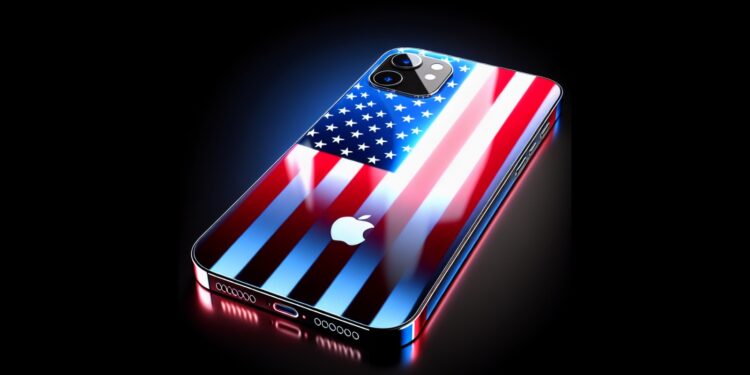For years, Apple has been the focus of political debates surrounding domestic production. The demand to manufacture the iPhone in the US has been a recurring topic – not least during the presidency of Donald Trump. Despite big promises and public announcements, the reality remains largely unchanged: Apple produces the iPhone almost entirely abroad. While the company invests billions in the US market, iPhone assembly remains outside the scope of the company's operations. This development raises questions – especially as to why even Trump is no longer calling for a complete relocation.
Apple recently announced a further $100 billion investment in the United States. This sum will be invested in projects such as the expansion of data centers, infrastructure, suppliers, and local component manufacturing. Despite the high investment, one thing remains unchanged: The iPhone will still not be assembled in the USA. Furthermore, around 95 percent of the components used come from abroad. The key question remains: Why is an iPhone "Made in America" still nowhere in sight?
Investments instead of relocation
While Apple's new investments are a clear signal to the US government, they do not affect the final assembly of the iPhone. This continues to take place primarily in Asia, for example at Foxconn in China. The majority of individual parts are also produced there or in other Asian countries. Only a small portion of the components are manufactured in the US. The new round of investments has not changed the actual production chain. The decision appears to be strategically motivated. With the promise of new jobs, US components, and long-term investments, Apple is creating political optimism without jeopardizing its own global supply chain.
Trump's reaction: calmness instead of pressure
During the official announcement of the investments, a scene occurred that aptly sums up the relationship between Apple and the Trump administration. During a press conference, Apple CEO Tim Cook was asked whether the final assembly of the iPhone would also take place in the USA in the future. Before Cook could answer, Trump intervened and qualified the question himself. He explained that Apple already produces many components in the USA and that international manufacturing has a historical tradition. At the same time, he emphasized that Apple could be encouraged to relocate in the long term with incentives – but made it clear that the measures taken so far were sufficient for him. The statement, "Apple is coming back to America," thus remains more symbolic than real.
Apple's tactics: political points without structural break
The relationship between Apple and the Trump administration is characterized by mutual calculation. Apple gives politicians what they want in the short term: jobs, investments, and prestige. In return, the company can maintain its global manufacturing model without facing additional tariffs or restrictions. One example of this is the proximity of the investment announcement to the introduction of new tariffs on imported semiconductors. According to Trump, companies already investing in the US should be exempt from the 100 percent tariffs.
- For Apple, this meant no additional costs. The investments acted as a hedge against economic and political risks.
Long-term thinking instead of actionism
Tim Cook is pursuing a long-term plan. The company expects political constellations to change, while economic efficiency will remain crucial in the long run. A complete relocation of iPhone production back to the US would incur massive costs – for production facilities, personnel, logistics, and supply chains. These costs would have a direct impact on the final prices. Instead, Apple is relying on symbolic measures. A commemorative plaque, high-profile investments, targeted communications. All of this ensures the company's political backing without jeopardizing its production logic.
- Apple relocates entire glass production for iPhones to the USA
- Apple increases US investments to $600 billion
- Trump announces chip tariffs – Apple remains out
Apple sticks to the global model
An iPhone "Made in America" remains unlikely for the time being. Apple is investing heavily in its US facility, but not in the crucial production steps. Assembly continues to take place abroad, and the majority of components are sourced outside the US. Trump's reaction shows that this strategy is currently politically acceptable. For Apple, this means planning security. The investments are less of a reversal than a smart move in a long-term game between business and politics. The best products for you: Our Amazon Storefront offers a wide selection of accessories, including those for HomeKit. (Image: Shutterstock / Shutterstock AI Generator)
- Apple remains spared despite new Indian tariffs
- Tim Cook: Apple has the most exciting roadmap yet
- Apple warns of risks in billion-dollar deal with Google
- Apple Vision Pro: Weak numbers, strong future plans
- Tim Cook is the longest-serving Apple CEO
- Apple sells three billionth iPhone since 2007
- Apple restructures AI strategy: Major acquisitions possible
- Apple faces record tariff costs in Q4
- Tim Cook: Apple is making progress with personalized Siri
- Apple expands AI division – iPhone remains growth driver
- Apple Q3/2025: Profit, revenue and services on track for record results





